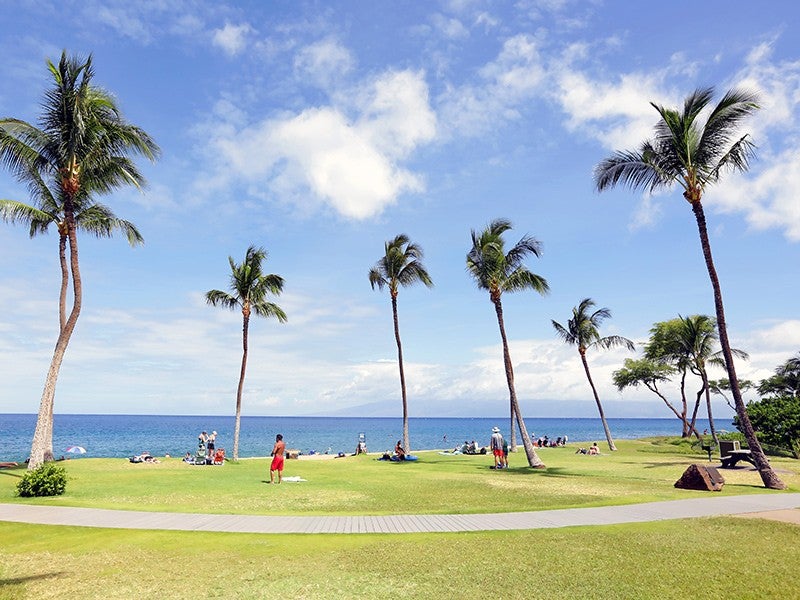Federal Court Rules That Maui County Is Violating Clean Water Act
On Friday, May 30, 2014, the federal district court in Honolulu ruled that Maui County is violating the Clean Water Act by using injection wells to illegally discharge wastewater from a water treatment facility. The court concluded that most of the three to five million gallons of wastewater the County’s Lahaina Wastewater Reclamation Facility dumps…
Contact
On Friday, May 30, 2014, the federal district court in Honolulu ruled that Maui County is violating the Clean Water Act by using injection wells to illegally discharge wastewater from a water treatment facility. The court concluded that most of the three to five million gallons of wastewater the County’s Lahaina Wastewater Reclamation Facility dumps into the wells each day flows through groundwater and emerges offshore of popular Kahekili Beach Park in West Maui, where the wastewater-laden groundwater “substantially affects the physical, chemical, and biological integrity of the ocean water.” The court will impose civil penalties for the County’s violations following a hearing set for March 17, 2015.
In 2012, four Hawaiʻi community groups—Hawaiʻi Wildlife Fund, Surfrider Foundation, West Maui Preservation Association, and Sierra Club-Maui Group—filed suit under the federal Clean Water Act to stop Maui County from discharging wastewater into the ocean from its Lahaina treatment plant without a permit. Their lawsuit followed years of unsuccessful efforts to resolve the issue out of court.
Nearly two million gallons of wastewater injected into wells at the facility each day surface offshore of popular Kahekili Beach Park in West Maui, killing the coral reef and triggering outbreaks of invasive algae.
“To discourage polluters like Maui County from using our oceans as their dumping ground, the Clean Water Act imposes stiff penalties,” explained Earthjustice attorney David Henkin. “Maximum penalties in this case already exceed $100 million, and the meter is ticking at a rate of over $100,000 per day. It’s time for the County to stop dragging its feet and fix this problem.”
“For years before we went to court, the plaintiffs and other concerned Maui residents had meeting after meeting with the County and tried to convince our public officials to take seriously the threat to our marine environment and public health from the Lahaina injection wells,” said Lucienne de Naie, Conservation Chair of Sierra Club Maui. “It’s frustrating that they refused to listen to us, forcing us to go to court, but we are happy the judge understands the gravity of the situation.”
In ruling for the community groups, the court found that wastewater-laden groundwater entering the ocean at Kahekili has “exceptionally elevated” levels of nitrogen and phosphorous, and that the addition of nutrients from the County’s facility “can accelerate the growth of fleshy seaweed and algae, which can compete with, outgrow, and kill coral.” The court noted that “the coral reefs near the submarine seeps have been subject to algal blooms that have led to a decline in coral cover from 55% to 33% between 1994 and 2006.” The court further found that the County’s discharges into the ocean are “substantially more acidic than the rest of the ocean’s nearshore water,” lower in salinity and dissolved oxygen, and “substantially elevated” in temperature.
“With elevated nutrients, acidity and temperature, combined with its low salinity and oxygen, the County’s wastewater is, sadly, a perfect recipe for destroying Kahekili’s coral reefs,” explained Hannah Bernard of Hawaiʻi Wildlife Fund. “The dramatic decline of this once pristine marine environment is just heartbreaking. The County needs to take immediate steps to save what’s left.”
“Destroying coral isn’t the only problem the injection wells cause,” said Angela Howe of Surfrider Foundation. “The County’s wastewater contains chemicals like pharmaceuticals and fire retardants that also travel from the injection wells into nearshore waters, threatening local residents and tourists swimming and surfing at Kahekili Beach.”
“With West Maui in a near permanent drought, the County should be re-using the millions of gallons of wastewater from the Lahaina facility to meet the needs of golf courses, resorts, and other developments, not dumping it onto our reefs,” said Lance D. Collins of West Maui Preservation Association.

Additional Resources
About Earthjustice
Earthjustice is the premier nonprofit environmental law organization. We wield the power of law and the strength of partnership to protect people's health, to preserve magnificent places and wildlife, to advance clean energy, and to combat climate change. We are here because the earth needs a good lawyer.